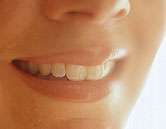Fluoride treatments may help fight cavities

(HealthDay)—Applying prescription-strength fluoride directly to the teeth can benefit patients at increased risk for cavities, a new expert panel concludes.
This fluoride can be applied by patients at home or by a dentist in the office, said the new evidence-based clinical recommendations from the American Dental Association.
"Topical fluoride therapy is the use of fluorides in tooth pastes, gels or varnishes that come in contact with the tooth surfaces in the mouth," explained one expert, Dr. Ronald Burakoff, chairman of the department of dental medicine at Long Island Jewish Medical Center, in New Hyde Park, N.Y.
"These therapies can either be professionally applied in higher concentrations or used at home in lower concentrations," said Burakoff, who was not on the ADA panel.
In its report, appearing in the November issue of the Journal of the American Dental Association, the panel said further research is needed, but topical fluoride might be helpful for people at increased risk of developing cavities.
According to Burakoff, those people may include children from poorer families, special needs children or adults, children living in areas that don't have fluoridated water, people with a family history of dental decay, or children or adults who for whatever reason have not been able to access dental care.
The ADA panel said dentists should determine a patient's risk for developing cavities by conducting a tooth decay risk assessment. People deemed to be at high risk might then be helped by the following:
- Professionally applied 2.26 percent fluoride varnish or a 1.23 percent fluoride gel every three to six months.
- Home-use prescription-strength 0.5 percent fluoride gel or paste or 0.09 percent fluoride mouth rinse (for patients 6 years old or older).
- A 2.26 percent professionally applied fluoride varnish every three to six months for children younger than 6 years of age.
In addition, the recommendations say that APF (acidulated phosphate fluoride) foam should not be used in children younger than 6 years old due to the potential for swallowing the foam. Meanwhile, the foam is also not recommended for children older than 6 years old and adults due to a lack of evidence for benefit.
Patients should not be worried about any side effects from fluoride treatments, Burakoff added. "Current scientific literature supports that when fluoride is used in the correct doses there are no adverse outcomes," he said.
More information: The Columbia University College of Dental Medicine has more about fluoride treatments and supplements.
Copyright © 2013 HealthDay. All rights reserved.


















